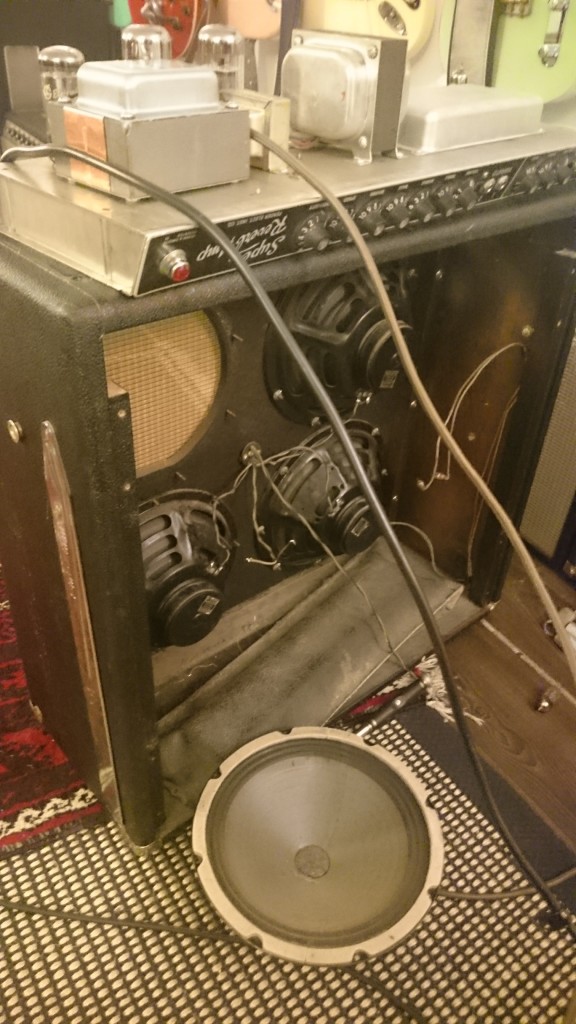Trust us. All guitar players will sooner or later run into problems with rattle and buzz from amps and speakers cabinets. Along the way we’ve learned a method to search for these faults. The following story has caused lots of frustration for us. Something good now needs to come out of this, so we’ll share it with you all.
For several months a super reverb has troubled us with huge rattle and buzz noises. First we thought it was something in the room that vibrated, like some furniture or the walls or ceiling was shaking. The noise was really overwhelming and had a wide 3D spread. The BuZzZzZzZzz and TrRrRrRrrRr… noise only came over a certain volume, quite loud and resonated particularly well on the 5-7 fret on the D string. It did sound mechanical, not microphonic or electronical. Perhaps a loose screw, speaker, tube or some piece of metal.
This is how we proceeded:
We placed the amp in the middle of the room away from other items and furniture that could possibly resonate and vibrate. It became clear to us that the super reverb amp was the source. But still impossible to determine whether it was the speakers, amp chassis or cabinet.
The deepest bass frequencies were not distorted, so we ruled out broken speaker cones. That sounds more like BlaarRrRfFfhh anyways.
Then we ruled out tubes and tube shields by replacing all tubes, one by one. We continued troubleseeking playing the normal channel keeping only the V1 and V6 preamp tubes in place. We then ruled out reverb or vibrato problems.
It could be speaker coil rub which has a typical buzz sound, and sometimes only certain frequencies. Speaker coil rub happens when the coil is misaligned or misshaped, usually because the wire and coating has burned due to too much current. Or someone or something has bumped into the speaker magnet with enough torque to bend the entire speaker frame so that the coil is misaligned with the magnet gap. A bad speaker recone job can easily lead to coil rub. First we removed back panels and chassis strap screws and lifted out the chassis from the cabinet. We used a 3m speaker jack cable and a jack-jack connector to connect the amp and chassis together while we constantly plucked the guitar strings. We had to inspect cabinet, speakers and chassis separately. The reverb tank was removed together with the cables.
We now heard the noise clearly coming from the cabinet, and not the chassis which was placed a few meters away. We hooked the super reverb cabinet with a different amp to verify that the cabinet was the problem and not the amp.
We went on soldering and lifting out each speaker to isolate the possible source. Sometimes an erronous speaker will, if it sits in the baffle, resonate and buzz even if the cables are decoupled. You have to remove it entirely from the baffle. Surprisingly, all speakers worked properly! Not bad for 50 year old Jensens, eh? Made in Chicago, says it all.
How could the cabinet alone cause this loud rattle and buzz? We then noticed that the noise was changing if we hit the cabinet with our fist while it was resonating. Something was loose. The last things to check were:
– Speaker screws and nuts. All were tight.
– The handle and screws. All tight.
– Fender logo and two small screws. Tight!
– The grill cloth and staples. Tight.
Finally, we nailed it. Can you guess what it was?
The tilt back legs! Ahhh… in a certain angle the metal leg touched the cabinet corner made out of metal. When the wooden cabinet resonated at loud volumes the metal leg was rattling against the metal corner.

